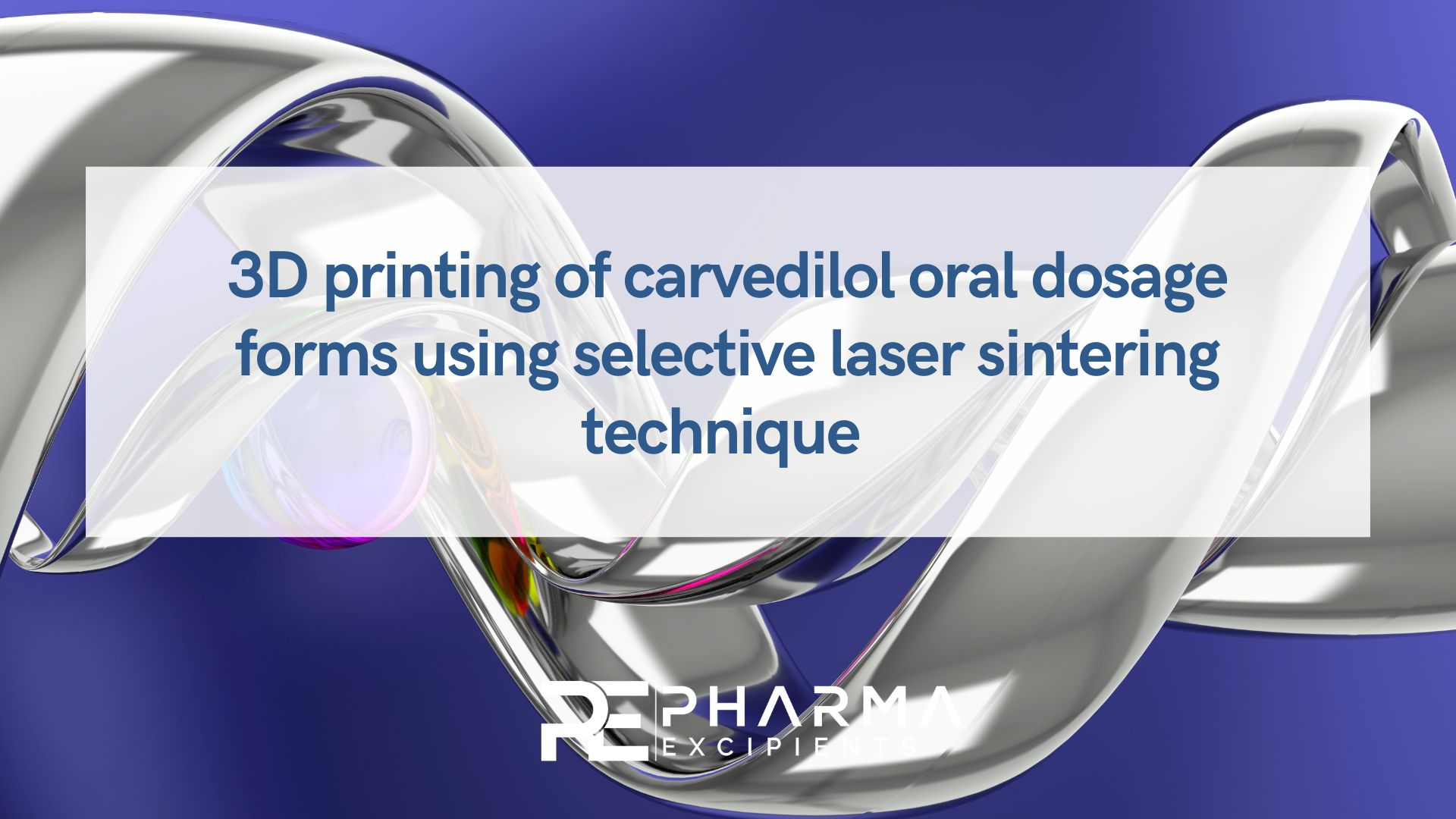3D printing of carvedilol oral dosage forms using selective laser sintering technique

Introduction
The adjustment of the dose according to the individual needs of the patient is a unique advantage of 3D printing technology, which is of particular importance for the pediatric and geriatric population, due to the diverse needs and characteristics of these groups of patients (Kotta et al., 2018). Selective laser sintering (SLS) is one of the newest 3D printing techniques that uses powder materials, where the powder particles are connected under the influence of laser beams. The main disadvantage of SLS 3D printing is the high process temperature, which can lead to the degradation of active substances. On the other hand, this technique has many advantages, such as high resolution, the possibility of powder recycling and the absence of preprocessing (Fina et al., 2018; Thakkar et al., 2021).
Мaterials and methods
The following materials were used in this study: carvedilol (CRV), as a model substance (Hemofarm); Kollidon® VA 64 Fine (vinylpyrrolidone-vinylacetatecopolymerisate K 28, BASF, Germany) as a binding agent; Candurin® Gold Sheen (Merck, Germany) as an agent to improve the absorption of laser energy; CombiLac® (70% alpha-lactose monohydrate, 20% microcrystalline cellulose (MCC) and 10% white, natural corn starch, Meggle, USA) as a vehicle/carrier of the active substance; MicroceLac® 100 (75% alpha-lactose monohydrate and 25% microcrystalline cellulose, Meggle, USA) as a vehicle/carrier of the active substance; Croscarmellose (carboxymethylcellulose sodium, Meggle, USA) as a super-disintegrator and colloidal silicon dioxide (Aerosil® 200, Evonik, Germany) as a flowability improver. The composition of the formulations is shown in Table 1.
Table 1. Qualitative and quantitative composition of formulations
| Formulation 1 | Formulation 2 |
|---|---|
| CRV (10%) | CRV (10%) |
| Kollidon®VA 64 (10%) | Kollidon® VA 64 (10%) |
| Candurin®Gold Sheen (3%) | Candurin® Gold Sheen (3%) |
| Aerosil® (2%) | Aerosil® (2%) |
| CombiLac® (75%) | MicroceLac® (70%) |
| / | Croscarmellose (5%) |
Download the full article as PDF here: 3D printing of carvedilol oral dosage forms using selective laser sintering technique
Nikola Pešić, Mirjana Krkobabić, Ivana Adamov,Branka Ivković, Svetlana Ibrić, Dušica Mirković, Đorđe Medarević, 3D printing of carvedilol oral dosage forms using selective laser sintering technique, Macedonian pharmaceutical bulletin, 69 (Suppl 1) 169 – 170 (2023), Online ISSN 1857 – 8969,
DOI: 10.33320/maced.pharm.bull.2023.69.03.083

